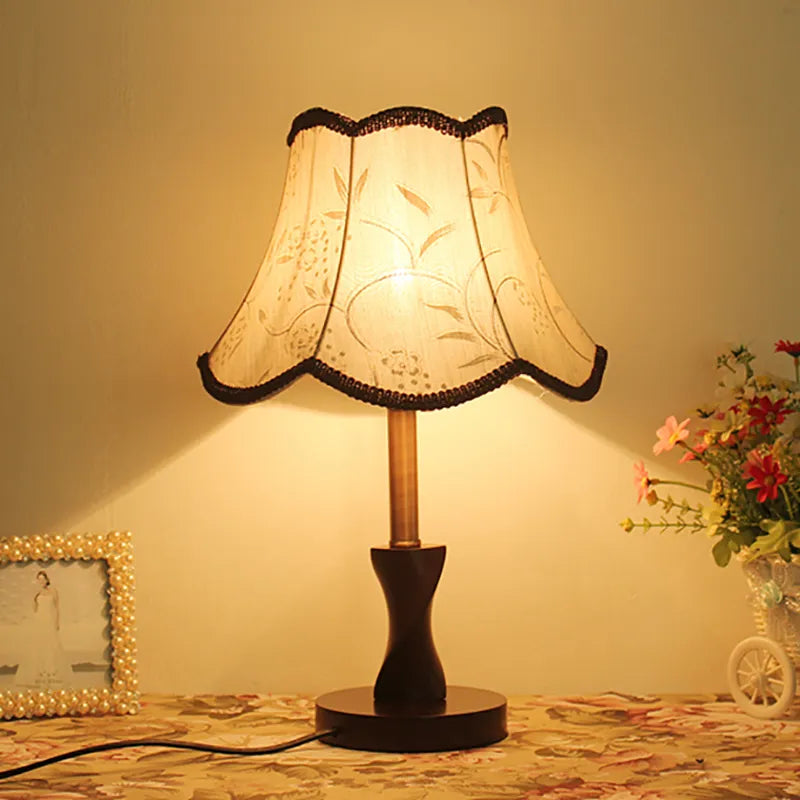How Bright Should a Desk Lamp Be?
Getting the lighting right in your home office is essential to creating a comfortable workspace and reducing eye strain. When choosing a desk lamp, you’ll want to consider its brightness.
Understanding the recommended lumen range for different desk activities, along with personal preference and factors like energy efficiency and dimming options, can help you choose the best light for your space.
Types of Desk Lamp Light Bulbs:
- LED (Light Emitting Diode): Known for energy efficiency and long lifespan.
- CFL (Compact Fluorescent Lamp): Offer a good balance between energy efficiency and brightness.
- Incandescent: Traditional bulbs, but less energy efficient compared to LED or CFL.
- Halogen: Produce bright, concentrated light, but can get hot and use more energy.
- Smart Bulbs: Can be controlled remotely and offer customizable features like dimming or changing colors.
Lumens
The number of lumens that a lamp emits measures the amount of light produced. A high number of lumens is important for providing adequate illumination, which can help you avoid eye strain while working or reading. Additionally, a well-lit workspace can promote productivity and enhance the aesthetics of your space.
Choosing the best desk lamp depends on the lighting needs of your space and personal preferences. The recommended lumens range for different tasks is a good place to start, but you should also consider other factors like the current lighting conditions in your room and your specific task requirements. Additionally, you should look for a lamp that provides adjustability and dimming options to customize your lighting experience and enhance energy efficiency.
There are a variety of lamps on the market that vary in style and size. You can find options that are tall and curved with a classic or contemporary look, as well as smaller styles that fit on your bedside table. The type of material the body and shade are made from can affect how they look as well, with metal or ceramic offering a more refined and stylish appearance than plastic options.
When buying a desk lamp, it is important to consider the bulb type and wattage as well. Many modern desk lamps use LED bulbs that are more energy efficient than incandescent bulbs. You may also want to consider smart LED bulbs that can be controlled with an app or Alexa.
Using the right desk lamp is an easy way to brighten your workspace and improve the overall functionality of your home office. The best desk lamps offer a combination of adjustability, dimming features and energy efficiency to make it easy for you to customize your lighting and work comfortably.
Wattage
When purchasing a desk lamp, it is important to consider how bright you would like the light to be. While brightness is determined primarily by the type of bulb used, there are also various features that can influence how bright the lamp is. Some of these factors include the number of lumens, color temperature, and dimming options.
Choosing a lamp with the appropriate amount of lumens can help to create optimal lighting conditions, which can lead to reduced eye strain and enhanced productivity. When choosing a lamp, consider the types of tasks that you perform most often and how much brightness is required for those tasks. For example, drafting or detailed work may require a higher lumen count than reading and general office tasks. Additionally, consider your age and eyesight as these can impact how many lumens you need.
While watts were once the standard way to measure brightness, manufacturers now use lumens to describe the brightness of their lights. This makes it easier for consumers to understand the brightness of a light and find the right lamp for their needs. To make the process even easier, some manufacturers have converted watts to lumens on their product packaging to allow customers to easily compare brightness levels between products.
If you are shopping for a new desk lamp, make sure to read the product description carefully to determine how bright the light is and what type of bulb it uses. Ideally, you should choose a lamp with an LED bulb, as these bulbs are energy efficient and last longer than traditional incandescent bulbs. Additionally, some lamps come with additional features, such as phone-charging capabilities, that can enhance the functionality of your workspace.
Once you have understood the importance of lumens, it is time to start shopping for your ideal lamp! Remember to consider your personal preferences and task requirements, as well as the ambiance of your workplace when selecting a lamp. Additionally, keep in mind that adjustability and dimming options can provide an added level of customization and control to your lighting needs and workspace ambiance.
Color Temperature
When choosing a desk lamp, it’s important to consider the brightness of the bulb as well as its color temperature. A bright light can reduce eye strain and glare, which is especially beneficial for tasks that require attention to detail. A warmer light is also helpful for creating a relaxing ambiance and may help you sleep better at night. The right lighting can significantly improve your work productivity and comfort while reducing the risk of eye health issues in the future.
A good quality LED bulb will provide excellent illuminance and come in a wide variety of colors. It can also last much longer than traditional bulbs, which means you’ll save on energy costs in the long run. Additionally, LED bulbs produce less heat than traditional bulbs, which can be a benefit if you have a small workspace or are concerned about overheating.
The recommended lumens range for different desk activities provides a starting point, but personal preference and specific needs should be taken into account as well. For example, people who prefer a cozy and ambient environment may want lower luminosity levels while individuals who enjoy reading in the evening might benefit from a higher brightness setting.
Dimming options are another important feature to look for in a desk lamp. These can be useful for adjusting the level of brightness to match changing lighting conditions throughout the day or to create a more relaxing ambiance when working at home. This type of adjustability can also enhance energy efficiency and increase the lifespan of the bulb by reducing unnecessary usage.
Aside from being a great option for office spaces, desk lamps are an ideal choice for home workstations and other small workspaces. They can be used to illuminate intricate tasks like sewing, making models or doing woodworking, while minimizing shadows and glare. Look for a design that offers adjustable arms and a swivel head to ensure the illuminance is directed precisely where you need it. This flexibility can also reduce the amount of glare from other nearby objects and minimize any disruptions to those who are working near you.
Dimming
The right number of lumens is vital to maximizing your productivity and comfort when working at a desk. By understanding the recommended lumens for different activities, assessing your desk size/layout, room lighting conditions and personal preference, and considering energy efficiency and dimming options, you can choose the best LED lamp to meet your specific needs.
Besides lumens, you should also pay attention to the color temperature of your desk lamp. This is measured in Kelvin and describes how cool or warm the light is. Choosing a lamp with a cooler color temperature can help stimulate the brain and is often recommended for tasks that require focus and attention. On the other hand, a warmer color can be more soothing and may be preferred for desk tasks in the evening when it is time to wind down before sleeping.
Another important feature to look for in a desk lamp is adjustability and dimming options. These features allow you to easily adapt to changing lighting conditions throughout the day and shape your workspace ambiance. A good dimming option for a desk lamp should offer at least three, if not more, brightness levels so you can find the ideal level for your task.
Some lamps even have built-in sensors that automatically adjust the brightness based on natural sunlight or artificial light. This can help minimize eye strain because it automatically adjusts the light so that you never receive too much or too little light.
Additionally, look for a dimming option that allows you to control the color of your desk lamp. This is especially beneficial if you have sensitive eyes because it can reduce the amount of blue light exposure that your eyes are exposed to before bedtime, which can cause sleep issues. Lastly, check for LEDs that are energy efficient and rated to last for a long time. This can save you money on energy costs and reduce the amount of trash that your desk lamp produces.



















































